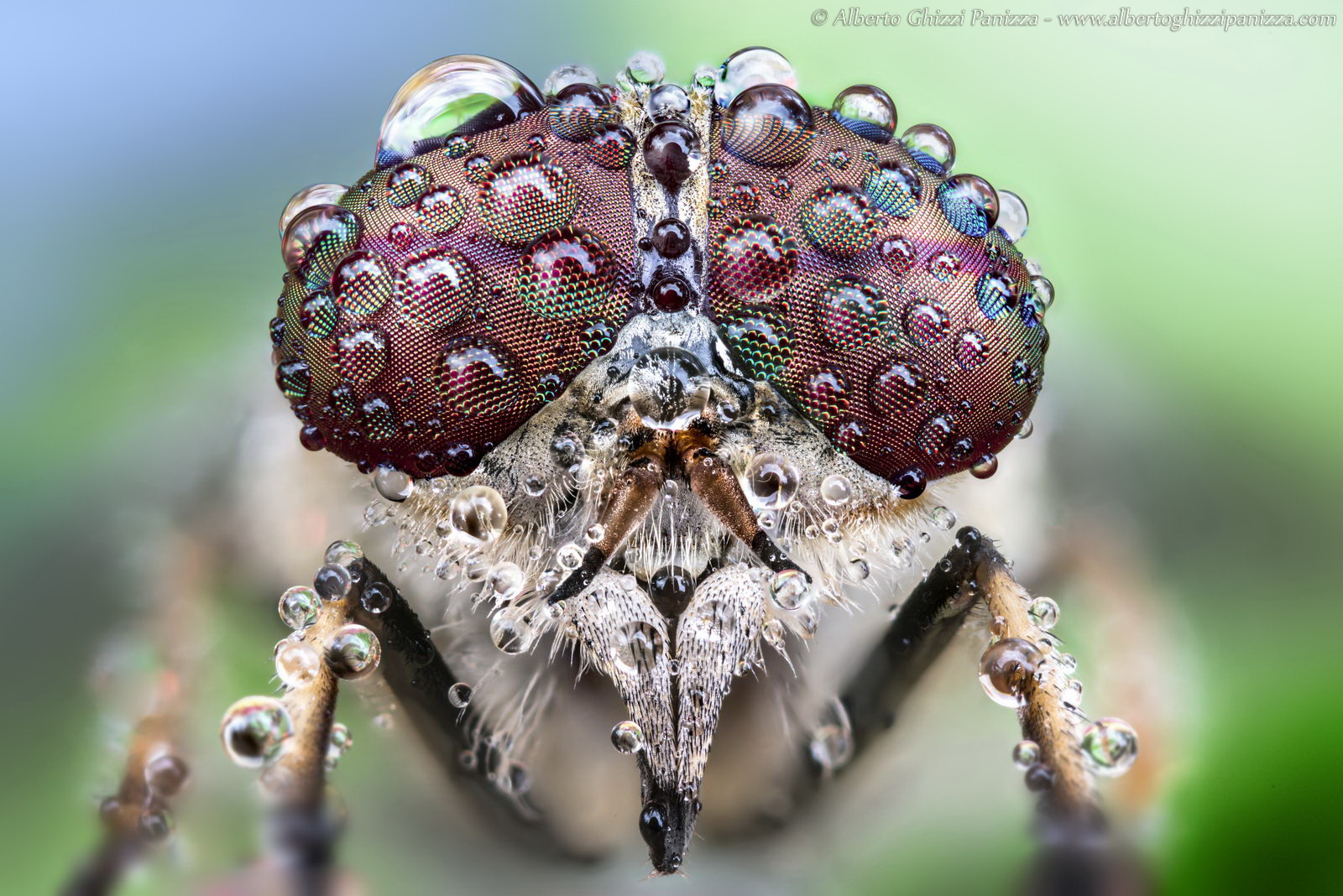Integral Field Units
Hoe je in één klap een 3D-beeld van een compleet sterrenstelsel kunt maken
Ooit wel eens geprobeerd een vlieg te vangen? Dat is nog niet zo makkelijk, omdat vliegen – net als de meeste andere insecten – 360 graden om zich heen kunnen kijken. Het geheim zijn hu facetogen, die uit een groot aantal kleine lichtdetectors bestaan: zogeheten ommatidia. Tezamen vormen deze een zeer breed mozaïekbeeld van de omgeving. Sommige mieren hebben maar een paar ommatidia, vliegen en bijen hebben er een paar duizend, en vlinders en libellen enkele tienduizenden. Hoe groter het aantal ommatidia, des te groter het beeldveld van de insect en des te scherper zijn zicht.
Gebruikmakend van een soortgelijk principe, maar dan voor een heel ander doel, hebben wetenschappers een instrument ontwikkeld dat integral field unit of kortweg IFU heet. In een IFU is het beeldveld opgedeeld in talrijke cellen of segmenten, die tezamen een overzicht van het geheel geven. IFU’s kennen vele toepassingen, onder meer bij de aardobservatie, bij het opstellen van weersverwachtingen en bij het volgen van natuurrampen en klimaatverandering.

In de astronomie worden IFO’s ingezet om uitgestrekte objecten, zoals gasnevels, sterrenstelsels of een dichtbevolkte sterrenhoop in één oogopslag te kunnen onderzoeken. Daarbij wordt een techniek gebruikt die integraalveldspectroscopie heet. Bij deze methode wordt het signaal van elke cel of pixel van het veld naar een spectrograaf geleid, die vervolgens voor elke afzonderlijke pixel een spectrum genereert. Alle spectra die dat oplevert worden gerangschikt tot een datakubus (zie afbeelding 1) die het complete tweedimensionale beeldveld omvat plus de derde dimensie die wordt ontleend aan de spectrograaf, die het opgevangen licht in zijn verschillende kleuren of golflengten splitst (zie afbeelding 2). Astronomen kunnen de schat aan informatie die integraalveldspectrografen genereren bijvoorbeeld gebruiken om de beweging van het gas in een ver sterrenstelsel te meten (zie eso1437) of de afstanden van de afzonderlijke sterrenstelsels die in een beeldveld te zien zijn (zie eso1507).
Er zijn verschillende soorten IFU’s. Elke gebruikt zijn eigen techniek om het beeldveld in stukjes te verdelen. De drie belangrijkste die in de astronomie worden toegepast zijn:
- Een microlensarray (lijkt sterk op de facetogen van een insect).
- Een glasvezelbundel, die alleen of in combinatie met een microlensarray kan worden gebruikt (zie afbeelding 3).
- Een image slicer (zie afbeelding 4).
Het eerste idee voor een IFU kwam in 1982 van G. Courtes. Het vond zijn eerste praktische toepassing in de astronomie met het instrument TIGER, dat in 1987 in gebruik werd genomen bij de 3,6-meter Canada-France-Hawaii Telescope (CFHT) op Mauna Kea, Hawaï. De IFU van TIGER was een microlensarray.
ESO’s eerste speciaal gebouwde integraalveldspectrograaf was SINFONI, die in 2004 in gebruik werd genomen bij de Very Large Telescope (VLT). SINFONI werkt met een image slicer, volgens hetzelfde principe als het recentere MUSE-instrument, dat een reusachtige IFU heeft. Ook de meervoudige-objectenspectrograaf FLAMES heeft twee IFU’s, terwijl de infraroodspectrograaf KMOS 24 kleine IFU’s heeft, die aan evenzovele beweegbare armen zijn bevestigd. Ook VIMOS heeft een vrij brede IFO, die is uitgerust met zowel microlenzen als een glasvezelbundel. Al deze instrumenten hebben verschillende eigenschappen: ze zijn gevoelig voor verschillende golflengten, hebben verschillende beeldvelden en verschillende spectrale resoluties. Dat maakt hen geschikt voor het waarnemen van verschillende soorten objecten en voor het oplossen van uiteenlopende astronomische vraagstukken.
Integraalveldspectrografen worden steeds geavanceerder, met grotere detectoren die steeds detailrijkere datakubussen van de kosmos produceren. Of, om in insectentermen te blijven: IFU’s evolueren van mieren tot libellen.
Wetenschappelijke hoogtepunten
- Zie de webpagina van FLAMES.
- Zie de webpagina van VIMOS.
- Zie de webpagina van SINFONI.
- Zie de webpagina van MUSE.
- Zie de webpagina van KMOS.



